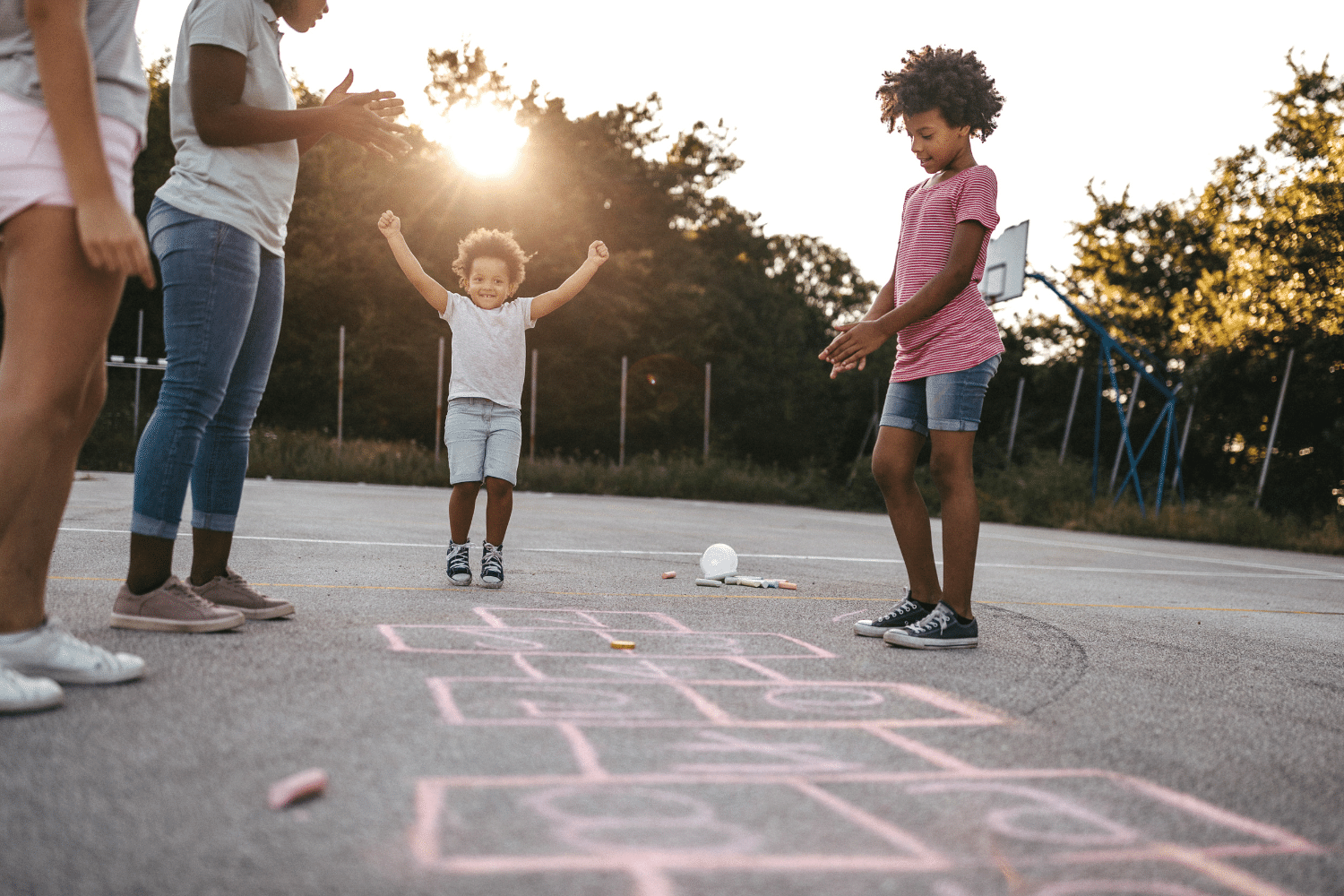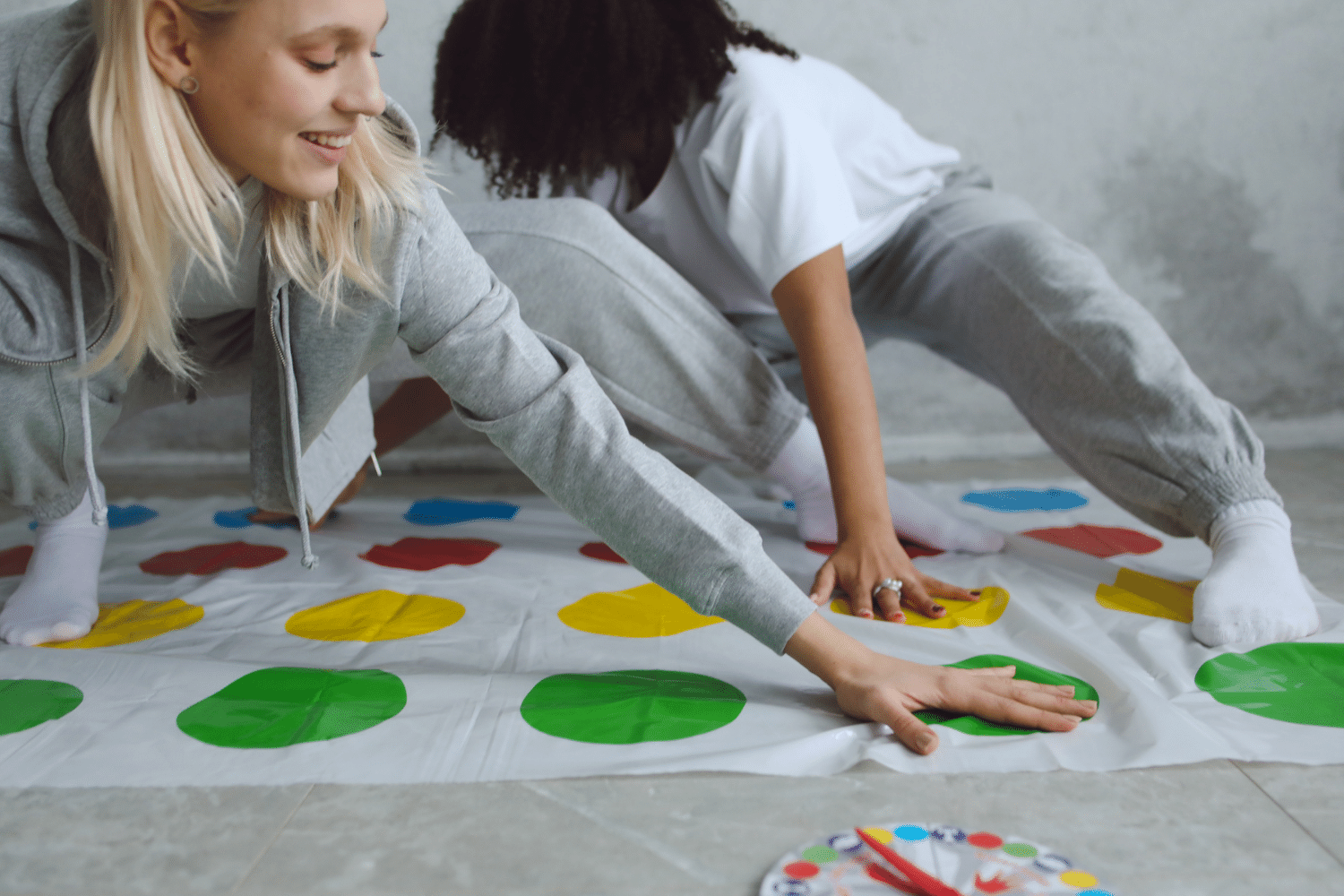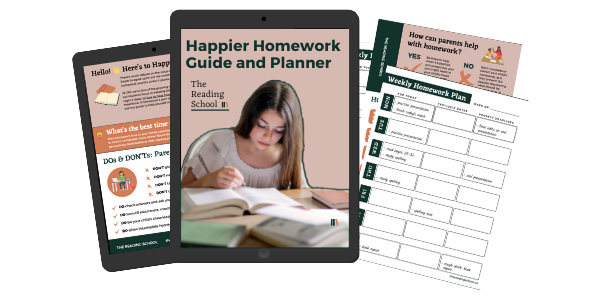Try These Whole-Body Literacy Activities for Early Readers
Reading & Phonics

We know you want to support your child’s reading journey, but you’ve also got a limited amount of time to spend with your family, period. Why not combine essential reading and phonics practice with family time? Learning doesn’t have to be in a classroom or a pen-and-paper setting.
Unstructured play is crucial for a child’s development in both physical and mental ways. As parents, we know our children are happiest and most engaged when they’re playing. There’s plenty of scientific evidence that fostering time for play is in our children’s academic interests, too. Even if all you do is play in an enjoyable way for you and your child, and skip the phonics ideas, you’re still contributing to their academic, physical, social and emotional development. Well done!
Gross Motor Movement Helps Children Learn
Repetitious, playful experimentation breeds competence and creativity. Picture the toddler experimenting with toy trucks and various planes and inclines or gradeschoolers’ daily variations on the same premise of “playing house.” Evidence of the power of play is not new, but this year, a systematic review of 39 studies concluded that guided play for 3-8 year-olds may actually impart key literacy, numeracy and social skills better than typical direct-instruction methods.
The younger the child, the more their play is physical and whole-body. So it’s no surprise that emerging research suggests whole-body movement can help young children learn phonics and early literacy skills.
Another undeniable benefit of whole-body learning is motivation. Getting buy-in from kids is one of, if not the most important, ingredient in the learning process. Children are more willing to learn from us when they are engaged and enjoy the process.

5 Whole-Body Literacy Activities for Early Readers
Phonogram Hopscotch
Use masking tape indoors or sidewalk chalk outside! Draw a familiar hopscotch design but substitute phonograms for the numbers. For the youngest readers, try letter sounds. Move on to two-letter phonograms (digraphs) like /oo/ and /ee/ when your child is ready. As you play, call out the sounds on each hop! You can change the sounds on each round, if you wish, or practise more if they’re challenging.
Homemade Phonics Twister
This game will entice older kids to join in and review phonograms or high-frequency words along with early reading younger siblings. Use a standard Twister game, and tape down a sticky note or other small square of paper on each dot. No Twister game? Simply mark out a grid on the floor and tape papers down; it doesn’t have to be precise! Use a marker to write out age-appropriate phonograms or letter sounds, or use challenging high-frequency words for older readers. Let one family member be the “caller” each time for extra reading practise (and silliness).

Jump & Spell
Find a blank wall and grab those sticky notes again! Write the letters of the alphabet out, two to three of each, or write out phonograms for older readers. Place sticky notes randomly on the wall, just out of reach of your children. Take turn giving each child an appropriate word for their skill level; they jump, reach and spell using the provided letters or phonograms. For healthy, multi-level competition, set a timer for 2 or 5 minutes and see who can spell the most letters! More challenging words — and higher sticky notes — can increase the difficulty for older kids and level the playing field. Credit to Coordikids for this idea.
Bowling for Words
Set up a plastic bowling set in the hallway and use a dry-erase or washable marker to add a few phonograms to each pin; you can likely fit three to four letters or phonograms, spaced out. Younger readers can simply practise identifying sounds by striking the right pin when you call out a phonogram. More experienced spellers can identify their own words and “score” when they spell a word. (You may need to plan the words, or at least identify a couple of potential words yourself, strategically turning the pins to get various visible phonogram combinations.)
Spelling Hunt
This activity can be the launching point for all kinds of fun reading, spelling, and even sentence writing practise, depending on whether you use phonograms or whole words. For example, write a series of words in large print with plenty of spacing between letters so you can cut the phonograms into pieces. The word “beet” would be cut into b-ee-t on three pieces of paper. Tape the papers to a small object, like soup cans or toy balls, and hide them. Add a timer for an extra challenge!
Which active learning games do you like to play with your child? Share your ideas below!



